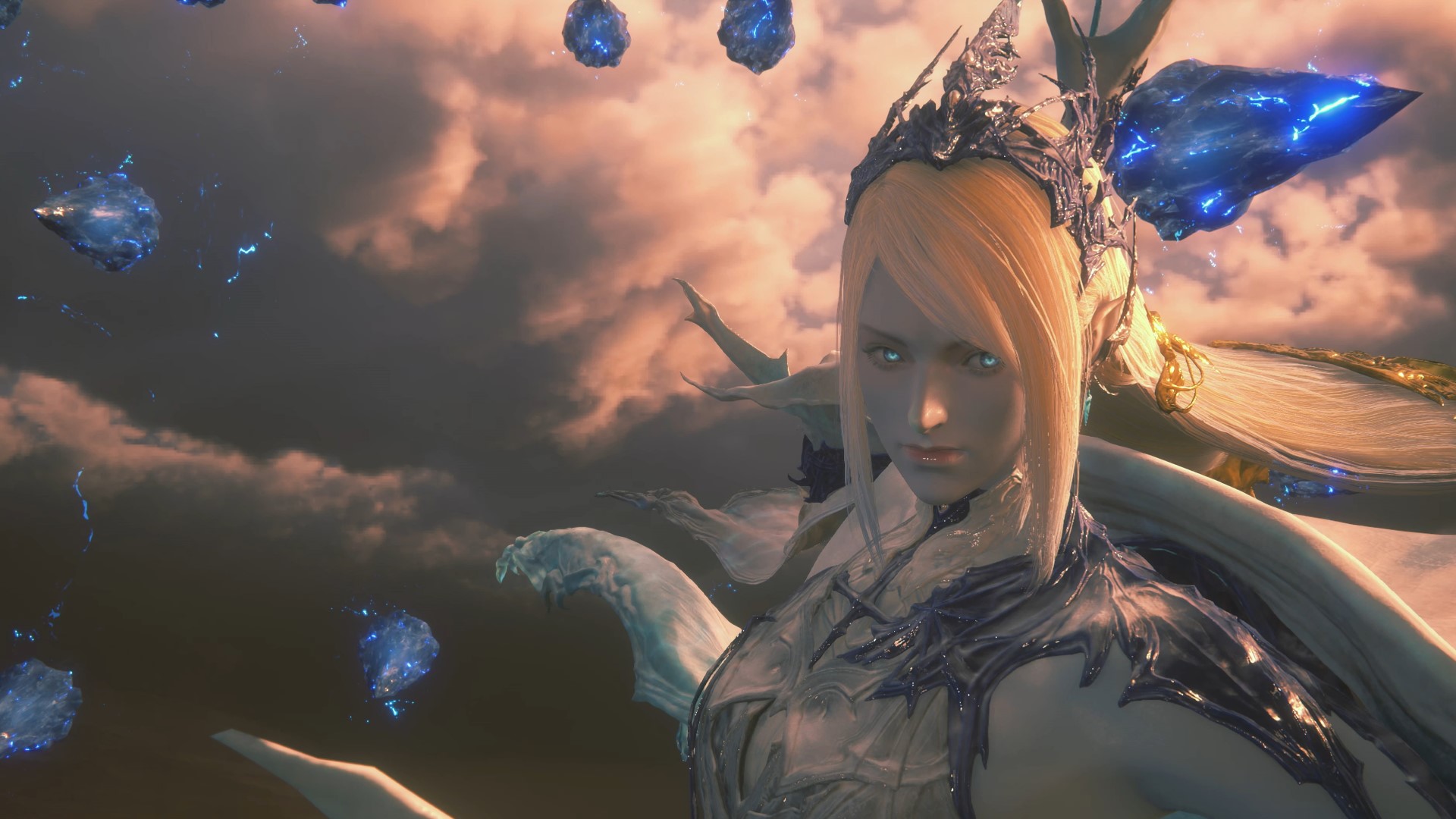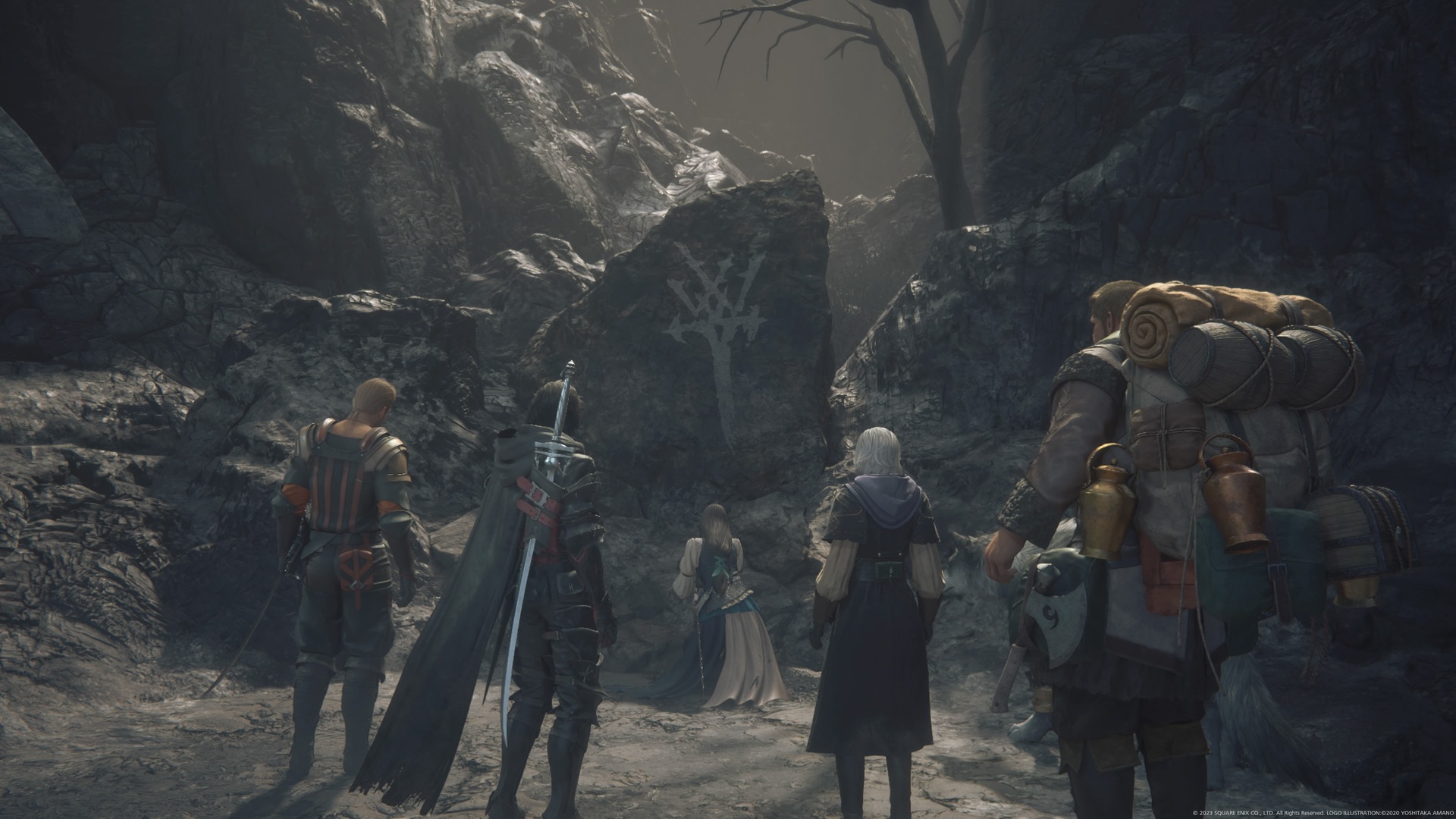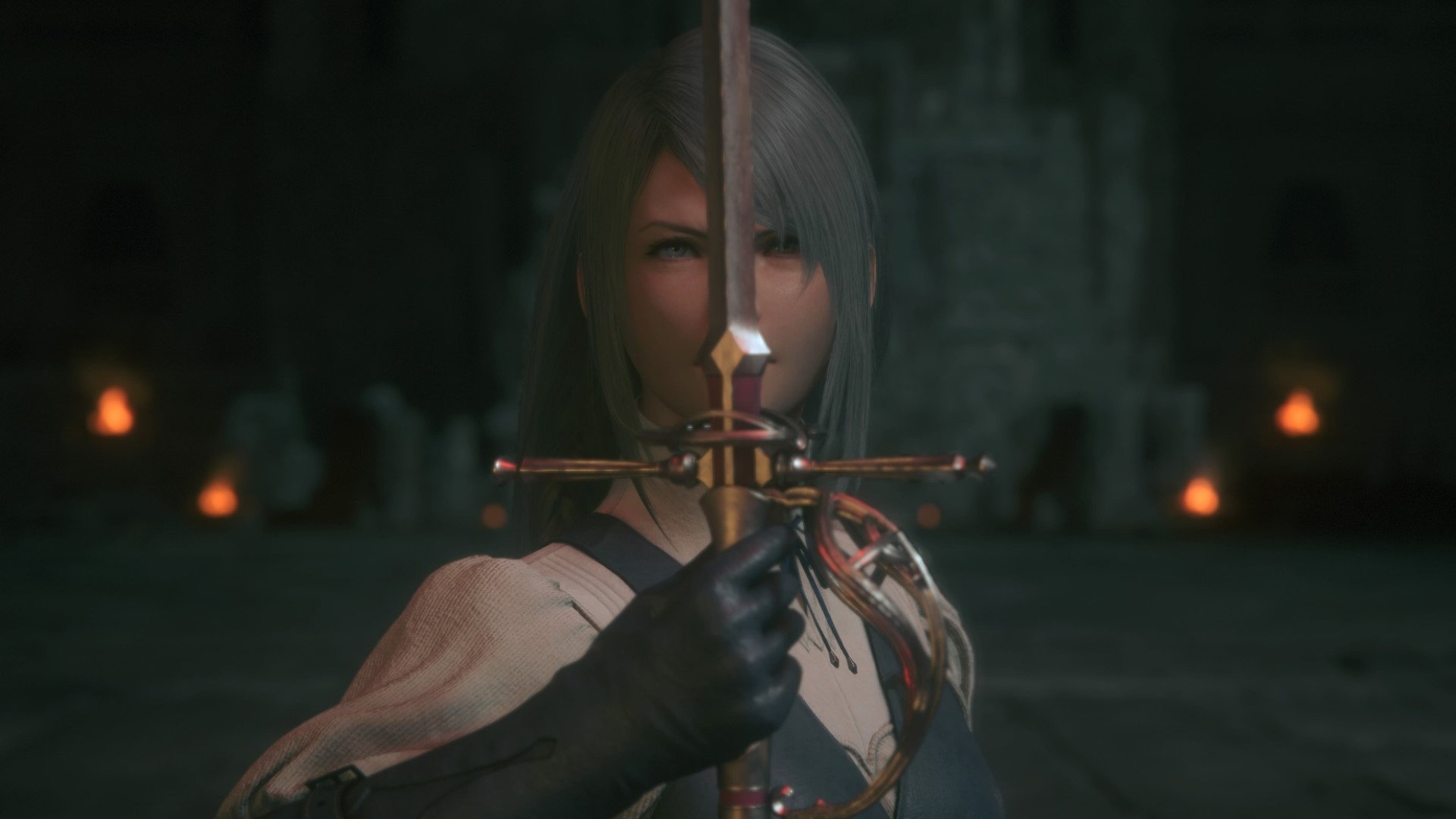TechRadar Verdict
Final Fantasy 16 is a shining example of narrative-focused games at their best, boasting immersive storytelling and cinematic action that invites you into its richly detailed world. The expansive, deeply immersive setting and cast of lovable, fully realized characters sets a gold standard for Final Fantasy titles, offering something that is more than the sum of its parts.
Pros
- +
Exceptional writing and character development
- +
Thrilling cinematic battles
- +
A dark fantasy setting full of charm and intrigue
- +
Jaw-dropping setpieces
Cons
- -
Dodgy lip-syncing in places
- -
Weak representation of women and minorities
Why you can trust TechRadar
Platform reviewed: PS5
Available on: PS5
Release date: June 22, 2023
Final Fantasy 16 is a narrative-driven, action-heavy RPG that sets a new gold standard for the genre, while also ditching several long-held Final Fantasy conventions to move into bold new territory.
Developed by Square Enix's Creative Business Unit 3, Final Fantasy 16 is the latest entry in the world-famous RPG series. Following the life of young nobleman Clive Rosfield, the game tells a gritty, dark fantasy story, bursting with mystery and political intrigue.
Final Fantasy 16 marks a collection of significant departures for the series, replacing the high-concept future fantasy previously seen in the series with a grounded pseudo-medieval setting. The main story also follows a single character, moving away from the party-oriented setup of Final Fantasy's past. Perhaps most significantly, the game entirely departs from the turn-based tradition, opting instead for a frenetic, real-time affair.
Square Enix has used these changes to produce something truly special, crafting an experience that ranks not only among the best PS5 games but also among the best RPGs of recent years.
Final Fantasy 16 tells a rich story, dripping with intrigue, personality, and compelling character drama. Though not a true open-world game, Square Enix's latest offering conveys a sense of depth and meaning to its exploration and navigation. That said, Final Fantasy 16 is story first – every one of the game’s systems, from exploration to character customization, is calibrated towards helping the game recount its grand tale.
Peeling the onion

Final Fantasy 16 places a great burden on the shoulders of its protagonist. For the overwhelming majority of the game, you inhabit Clive Rosfield, you go where he goes, see what he sees and, thanks to some deeply moving acting, you feel what he feels. Clive is the fulcrum upon which the entire game turns. Ben Starr, Clive’s voice actor, knocks it out of the park with his voice work.
Final Fantasy 16 takes its story further by pulling at the fraying threads of its own Machiavellian tapestry
Starting as a teen, the young nobleman struggles in the shadow of his obligations and expectations, the tension and stress oozing from every moment of Starr’s performance. Clive, like all Final Fantasy protagonists, is trauma-ridden and broody, which causes him to butt heads with other characters before finally accepting his connection to others. Once this happens Clive comes into his own during the latter half of the game, surpassing the person he was by allowing himself to feel. It’s a wonderful story about masculinity, emotional intelligence, and vulnerability.
Sign up for breaking news, reviews, opinion, top tech deals, and more.

Final Fantasy 16’s supporting cast is absolutely charming and brings the setting to life in a big way. Whether it’s Gav’s witty banter or Otto’s gruff but well-meaning grumbling, this found family makes Clive’s base of operations feel like a home.
All of this takes place in Final Fantasy 16’s well-realized and meticulously crafted world of Valesthia. Riven with political intrigue, the game begins with the world’s factions teetering on the edge of war. Emperors, Kings, and Vicerenes compete in a compelling pseudo-medieval power struggle, but Final Fantasy 16 takes things further by pulling at the fraying threads of this Machiavellian tapestry.
As layer after layer of Final Fantasy 16’s setting is pared back, the story gains more and more momentum - until it’s 1 am and you can’t bring yourself to go to bed because you desperately want to know where the next twist will take Clive and Co. Not since Death Stranding have I felt so captivated by a game’s sense of narrative momentum. The climax of this journey was so deeply affecting that it'll almost certainly live in my head rent-free for years to come.
Let the battles begin!

For all this emphasis on story, Final Fantasy 16 is, ultimately, a video game. With this in mind, we must ask: is it fun to play?
In short: absolutely.
As a lover of old-school turn-based RPGs, I was initially skeptical of the move toward a real-time system. Final Fantasy 16 goes further than Final Fantasy 7 Remake, opting for a system masterminded by Ryota Suzuki, the man responsible for Devil May Cry 5’s frenetic and action-heavy combat.
The designers have taken great pains to preserve the feel of Final Fantasy, ensuring that the skills available to Clive in battle both reflect the story and can be meaningfully customized to suit diverse play styles. Final Fantasy 16’s battle system is a breath of fresh air, making for fast-paced, satisfying encounters that rarely overstay their welcome.
In addition to the usual action RPG fare of precision dodging and combo attacks, Clive can equip Eikons – Final Fantasy 16’s resident demi-gods – channeling their power with different suites of attacks. These, too, can be customized and cycled through. Up to three Eikons can be equipped at any one time, but, with the right investment of skill points, you can mix and match these abilities to your whim.
While definitely a different beast from its turn-based predecessors, the battle system kept me coming back for more
As the story unfolds, more Eikons become available, ensuring that you have new options for your build even relatively late into the game. By the final battle, my version of Clive had an eclectic mix of abilities, which synergized together to support my playstyle’s emphasis on dodging and hit-and-run attacks.
While in Final Fantasy 16’s overworld, I found myself actively seeking out battles, going out of my way to enjoy the slick and well-polished combat experience. This, undoubtedly, speaks to the depth and appeal of these mechanics. While definitely a different beast from its turn-based predecessors, the battle system kept me coming back for more with its gripping cinematic design.
Distant worlds

Final Fantasy 16 is not an open-world game, but it does offer luscious environments for you to explore as you make your way through the story. Environmental storytelling is commonplace as locations change to reflect story beats. The title does not deliver the open-world environments of Horizon: Forbidden West or Assassin’s Creed: Valhalla, a choice that keeps Final Fantasy 16’s narrative feeling tightly paced and focused.
All of this is framed by a crisp UI which allows you to make adjustments to Clive’s loadout with ease. Clearly designed with PS5 controllers in mind, intuitive shortcuts are the norm. The menu design also enjoys the occasional nostalgic nod to Final Fantasy’s past. The party indicator shows cute 16-bit versions of your traveling companions.
Fans of Final Fantasy 14 will notice the return of the EXP symbol and Limit Break bars from the critically acclaimed MMO, with an expanded free trial which you can play through the entirety of A Realm Reborn, and the award-winning Heavensward expansion, etc.
The experience is scored by veteran composer Masayoshi Soken, also renowned for his genre-defying work on Final Fantasy 14. His masterful soundtrack elevates the game, enriching the game’s subtle and epic moments with deft scoring and the use of leitmotifs. The tracks are exceptional, easily on par with the likes of Final Fantasy 7 Remake, Octopath Traveller 2, and upcoming Square Enix juggernaut Final Fantasy 7 Rebirth.
Though most cutscenes are impeccable, lip-syncing is occasionally an issue when using English dialogue
That said, though remarkable, the game is far from perfect. Background NPCs will often repeat lines which, no matter how well written, can be grating for those less inured to this particular JRPG staple. Similarly, though most cutscenes are impeccable, lip-syncing is occasionally an issue when using English dialogue.
Lastly, though the game provides a stunning portrait of human struggle across a range of affecting themes, the title neglects the members of its central cast that belong to minorities. Though some female characters, most notably Jill, do have agency, they are too often the exception, rather than the rule. While not sufficiently egregious to impact my enjoyment of the game experience, the lack of female soldiers was conspicuous and jarring. That said, the game also includes several heavily queer-coded scenes involving a major character, which was pleasing to see, especially from a title produced in Japan’s socially conservative environment.
Overall, however, Final Fantasy 16 is an absolute triumph. It is a modernized Final Fantasy that breaks new ground for the series, boldly defying convention to produce something that stands apart from the rest of the series. Final Fantasy 16 itself, much like its protagonist, seeks to stand on its own terms, succeeding at this difficult task with skill and flair.
Accessibility
Final Fantasy 16 makes a concerted effort on the accessibility front, which, though limited in some respects, helps to deliver a more open-ended experience.
It offers a range of difficulty levels which in themselves can be customized through the Timely Accessories feature, allowing you to flat-out remove or circumvent combat mechanics that don’t gel with your play style. These adjustments can be made on the fly and can be added or removed mid-session, so long as you’re not actively in battle.
The game also offers visual indicators to assist the hearing impaired, providing a customizable sound display at the sides of the screen. The system is responsive and helps give a sense of the game’s soundscape.
Final Fantasy 16 makes good use of the DualSense controller's haptic feedback, using the controller to indicate threats, events in the overworld, and specific moments during cutscenes.
That said, Final Fantasy 16 lacks a field of vision slider and a toggle for screen shaking – an omission that may disappoint those who struggle with motion sickness.
How we reviewed Final Fantasy 16
Final Fantasy 16 was reviewed on PS5 using a Sony PS5 DualSense wireless controller. I played 45 hours of the game including the entire main campaign, as well as a large number of side missions and the vast majority of the optional Hunt Mark side bosses.
I’m a big fan of the Final Fantasy series, having played almost every installment, which enables me to know what makes a great Final Fantasy game and what makes a not-so-superb one. I also attended a hands-on with Final Fantasy 16 in April which gave me more context, grounding, and information.
The title was reviewed on a mid-end curved gaming monitor using a PS5 headset.
Final Fantasy 16 releases on June 22 for PS5. Review code was provided by Square Enix

An editor and freelance journalist, Cat Bussell has been writing about video games for more than four years and, frankly, she’s developed a taste for it. As seen on TechRadar, Technopedia, The Gamer, Wargamer, and SUPERJUMP, Cat’s reviews, features, and guides are lovingly curated for your reading pleasure.
A Cambridge graduate, recovering bartender, and Cloud Strife enjoyer, Cat’s foremost mission is to bring you the best coverage she can, whether that’s through helpful guides, even-handed reviews, or thought-provoking features. She’s interviewed indie darlings, triple-A greats, and legendary voice actors, all to help you get closer to the action. When she’s not writing, Cat can be found sticking her neck into a fresh RPG or running yet another Dungeons & Dragons game.
